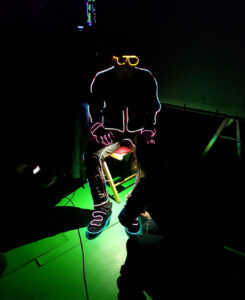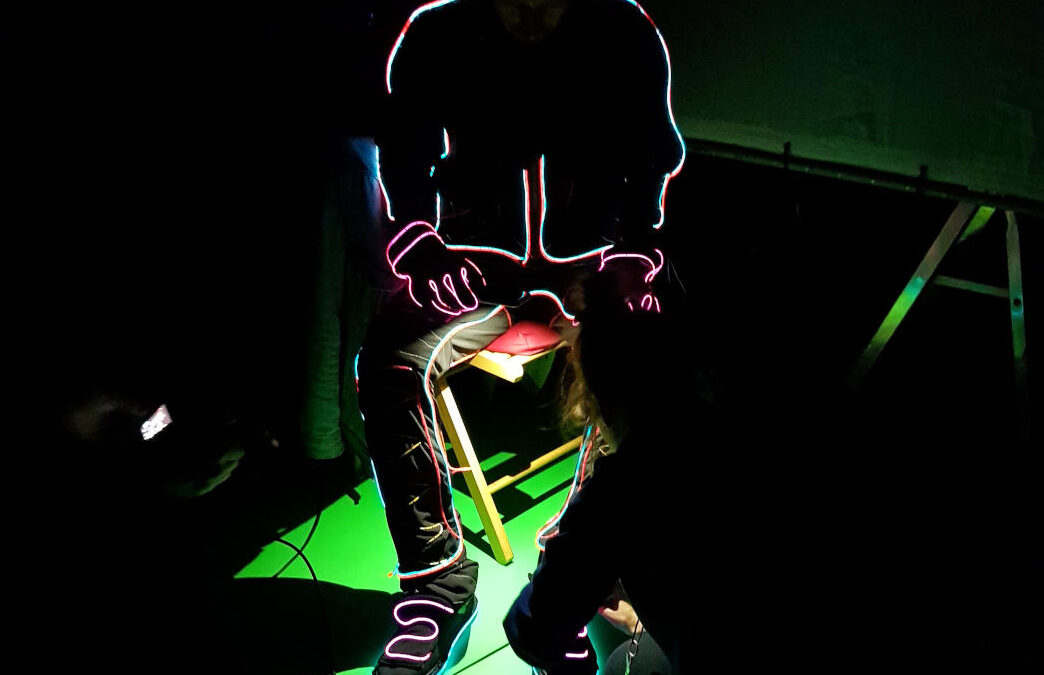In the realm of professional video and photography production, lighting plays a pivotal role. However, controlling light can be just as important as using it. This is where a blackout studio comes in. But what exactly is a blackout studio, and why is it essential for certain types of production? Let’s explore this specialized studio environment, its uses, benefits, and everything you need to know to make the most of it.
Content:
- Understanding the Basics of a Blackout Studio
- Where and How Are Blackout Studios Used?
- The Advantages of Using a Blackout Studio
- Tips from Soundstage Studios Experts
- Who Needs a Blackout Studio?
- Nuances of Working in a Blackout Studio
- Blackout Studio vs. Traditional Studio
Understanding the Basics of a Blackout Studio
A blackout studio is a production space designed to offer complete control over lighting conditions by eliminating all external light sources. The walls, ceiling, and sometimes even the floor are painted black or covered with black drapes to absorb light and prevent reflections. This creates a “light vacuum,” giving producers total command over the lighting setup.
Unlike traditional studios, blackout studios are not affected by natural light, making them ideal for productions where precise control of lighting is required. This allows for endless creative possibilities, from dramatic shadows to perfectly isolated subjects.

Where and How Are Blackout Studios Used?
Film and Video Production
In filmmaking, blackout studios are invaluable for scenes requiring a controlled, moody atmosphere or for shooting in complete darkness. They’re often used for creating high-contrast scenes where light and shadow interplay to enhance drama and focus.
Photography
Blackout studios are a favorite among photographers who specialize in portrait, product, or artistic photography. The total absence of ambient light allows photographers to experiment with different lighting techniques, such as low-key photography, to produce striking, professional results.
Special Effects and Music Videos
Soundstage Studios experts often recommend blackout studios for music videos and special effects. The controlled lighting ensures the focus remains on the artist or subject, allowing for visually impactful storytelling. Complex lighting rigs and projections can be used without interference from natural or ambient light.
The Advantages of Using a Blackout Studio
- Absolute Control Over Lighting: Blackout studios provide an environment where light can be precisely manipulated. This is crucial for productions that rely heavily on specific lighting effects.
- Elimination of External Interference: Natural light, which can vary in intensity and color throughout the day, is entirely removed, ensuring consistent results across takes.
- Creative Flexibility: From sharp shadows to subtle gradients, the creative opportunities in a blackout studio are limitless.
Tips from Soundstage Studios Experts
1. Plan Your Lighting Setup in Advance
“Walking into a blackout studio without a lighting plan is like shooting in the dark—literally,” [advises Lighting Director at Soundstage Studios]. Define the mood, shadows, and highlights you want to achieve before setting up.
2. Use Light Modifiers
“Modifiers such as softboxes, grids, and reflectors become essential tools in a blackout environment,” [explains Senior Photographer.] These tools help shape and control your light sources for the desired effect.
3. Mind the Shadows
“Blackout studios amplify the effect of every light source,” [warns Cinematographer at Soundstage Studios.] “Shadows can be dramatic, but uncontrolled shadows may ruin your composition. Always double-check shadow placement and intensity.”

Who Needs a Blackout Studio?
Blackout studios cater to a variety of professionals:
- Filmmakers and Videographers: For scenes demanding precise lighting control or complete darkness.
- Photographers: Particularly for those working on high-contrast portraits, product shots, or low-key artistic photography.
- Advertising Teams: To highlight products with pinpoint lighting without distractions.
- Artists and Creators: For music videos, experimental films, or projects involving projections and special effects.
Nuances of Working in a Blackout Studio
Time and Setup Management
Since blackout studios eliminate ambient light, every aspect of lighting must be artificially created. This can be time-consuming, especially for complex shoots. Soundstage Studios recommends allowing ample time for setup and adjustments.
Post-Production Considerations
A well-lit scene in a blackout studio minimizes the need for extensive post-production adjustments. However, poorly executed lighting can lead to additional editing work to correct shadows or highlights. Proper planning and execution are key.
Blackout Studio vs. Traditional Studio
| Feature | Blackout Studio | Traditional Studio |
| Light Control | Total control over lighting conditions | Partial, dependent on external light |
| Ambient Light | Completely absent | May be influenced by natural light |
| Creative Flexibility | High (ideal for low-key and dramatic setups) | Moderate |
| Setup Time | Longer (requires detailed lighting setup) | Shorter (ambient light aids setup) |
| Best Use Cases | Low-key photography, dramatic scenes | General photography, interviews |
Frequently Asked Questions

What is the main difference between a blackout studio and a green screen studio?
A blackout studio is designed to eliminate all external light for precise lighting control, while a green screen studio is used for chroma keying, allowing digital backgrounds to be added in post-production. Each serves a unique purpose based on production needs.
Can I rent a blackout studio for small-scale projects?
Absolutely. Blackout studios like those at Soundstage Studios cater to projects of all sizes, from independent photographers to large film productions.
What equipment is essential for working in a blackout studio?
Professional lighting equipment is a must. This includes softboxes, grids, and reflectors to shape the light. A sturdy tripod and tethering setup are also recommended for stability and workflow efficiency.
Is working in a blackout studio more expensive than other studios?
Costs may be higher due to the specialized nature of the space and equipment. However, the creative control and high-quality results often outweigh the additional expenses.
Does Soundstage Studios offer support for lighting setups?
Yes, Soundstage Studios provides on-site technical support to help clients achieve the best lighting setups for their projects, ensuring a smooth and productive shoot.
Elevate Your Production with Soundstage Studios
Ready to take your creative projects to the next level? Visit Soundstage Studios to explore our professional blackout studio facilities. Whether you’re a filmmaker, photographer, or content creator, our state-of-the-art studios and expert team will help you achieve stunning, professional results. Book your session today!

